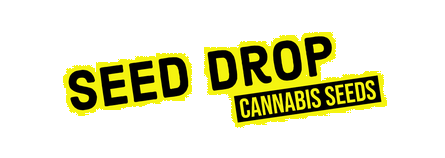Lighting for Cannabis: Complete Guide to Indoor Grow Lights
Lighting plays a crucial role in the success of indoor cannabis cultivation. From choosing the right type of lights to understanding photoperiod and autoflowering schedules, getting the lighting right can mean the difference between a bountiful harvest and a failed crop. This guide will walk you through everything you need to know about lighting for cannabis, including types of grow lights, setup strategies, and troubleshooting common issues.
1. Why Lighting Matters in Cannabis Cultivation
Cannabis is a light-hungry plant, especially during the flowering stage. Whether growing indoors or supplementing outdoor light, you need to replicate the optimal conditions for photosynthesis. Light affects everything from the plant’s height and structure to resin production and terpene profile.
In nature, cannabis plants grow under varying light conditions throughout the year, triggering vegetative growth in spring and flowering in late summer. Indoor growers must recreate these cycles through artificial lighting. The type of light, spectrum, intensity, and duration will all impact your plant’s health and yield.
2. Types of Grow Lights for Cannabis
2.1 LED Grow Lights
LEDs have become the preferred option for many growers because of their energy efficiency, adjustable spectrum, and minimal heat output. They are perfect for beginners and professionals alike.
- Energy-efficient: Use less power than HPS or MH lights, lowering electricity bills.
- Full spectrum: LEDs can mimic natural sunlight, promoting healthy growth from seed to harvest.
- Low heat: Reduced risk of heat stress means less need for ventilation systems.
2.2 HPS (High-Pressure Sodium) Lights
HPS lights have long been the standard for flowering cannabis due to their red-orange spectrum, which promotes heavy bud production. They are ideal for growers seeking maximum yields.
- Pros: High yields, proven effectiveness in flowering.
- Cons: High energy consumption, significant heat output.
2.3 Metal Halide (MH) Lights
MH lights emit a blue spectrum, perfect for vegetative growth. They are often used alongside HPS lights in photoperiod grows to optimize results.
- Pros: Encourages tight node spacing and vigorous growth during the vegetative phase.
- Cons: Inefficient for flowering, generates heat.
2.4 CFL (Compact Fluorescent Lights)
CFLs are inexpensive and produce minimal heat, making them a good option for small spaces or seedling growth. However, they lack the intensity required for high yields.
- Pros: Affordable, low heat output.
- Cons: Low intensity, limited for larger grows.
3. Comparing LED vs. HPS Lights
The LED vs. HPS debate is common among growers. While HPS has been the industry standard for years, LEDs are quickly gaining popularity due to technological advancements. Below is a detailed comparison to help you choose the right light for your grow.
| Feature | LED | HPS |
|---|---|---|
| Energy Efficiency | High | Low |
| Heat Output | Low | High |
| Yield | Improving | High |
| Maintenance | Minimal | Requires bulb replacement |
Overall, LEDs are ideal for smaller, energy-efficient grows, while HPS lights are better for large-scale operations with high yield expectations.
4. Understanding Light Schedules for Cannabis
4.1 Photoperiod Plants
Photoperiod cannabis plants require specific light cycles to transition between vegetative growth and flowering. A typical schedule is 18/6 (18 hours of light, 6 hours of darkness) during the vegetative stage and 12/12 during flowering.
4.2 Autoflowering Plants
Autoflowering plants, on the other hand, don’t rely on light schedules to flower. Popular light schedules for autos include:
- 18/6: Balances growth and energy use.
- 20/4: Promotes slightly faster growth.
- 24/0: Maximizes growth but may stress some plants.
5. Light Placement and Adjustments
Proper light placement is crucial to prevent light burn and ensure even coverage. Here are some recommended distances:
- LED: 18-24 inches above the canopy.
- HPS/MH: 24-36 inches to reduce heat stress.
- CFL: 4-6 inches, as they produce minimal heat.
Monitor plant health and adjust lights as needed to avoid stretching or burning.
6. Troubleshooting Light-Related Issues
6.1 Signs of Light Burn
- Yellowing leaves at the top of the plant.
- Curling leaf tips.
- Bleached buds (white spots).
6.2 Solutions
- Raise the lights to increase the distance from the canopy.
- Use dimmable LEDs to reduce intensity.
- Monitor temperature and humidity closely.
7. Conclusion
Lighting is essential for growing healthy, high-yielding cannabis plants. Whether you choose LEDs, HPS, or another option, understanding your plants’ needs and adjusting the light schedule and intensity accordingly will set you up for success. Regular monitoring and fine-tuning will ensure that your cannabis plants thrive under optimal conditions.
